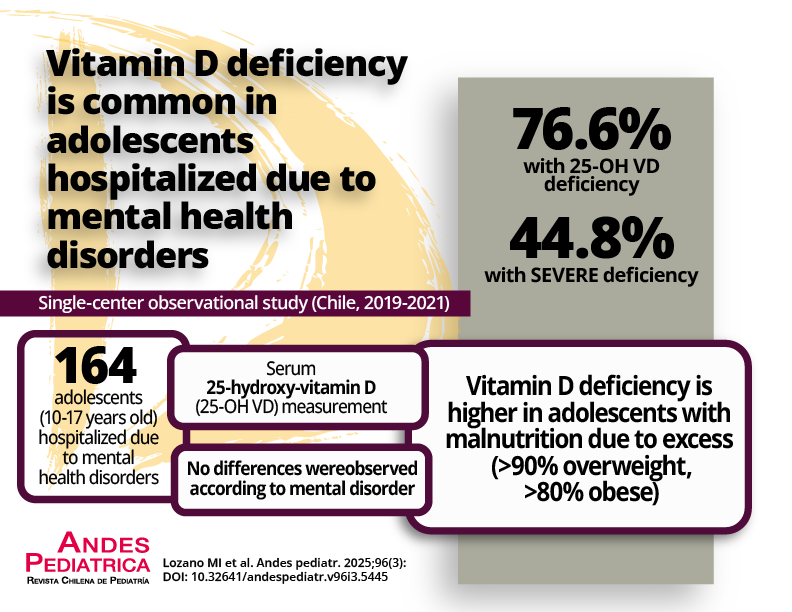Abstract
Mental health disorders (MHD) are a growing problem in adolescents. There is evidence that vitamin D (VD) deficiency is associated with MHD.
Objective: To evaluate VD deficiency in adolescents with MHD hospitalized in the Adolescent Hospital Unit (UHA), and to explore associated factors.
Patients and Method: Observational, analytical, cross-sectional study. All adolescents aged between 10 and 17 years, with MHD, admitted to the UHA, and in whom 25-OH VD measurement was performed were included. The association between serum 25-OH VD concentration and variables of interest (sociodemographic, comorbidity) was evaluated in a multivariate model, including nutritional status (WHO 2007), season, mood disorder, type of diet, age, and sex, among others.
Results: 164 adolescents were included. VD deficiency was 76.6%, and 44.8% had severe deficiency. The VD deficiency was 90.9% in overweight adolescents and 82.2% in obese adolescents. The adjusted mean 25-OH VD levels were 23.3 ng/ml (95% confidence interval [CI]: 16.7-30.0) in deficiency malnutrition, and 14.2 ng/ml (95%CI: 10.1-18.3) in overweight (p< 0.01); and 21.1 ng/ml (95% CI: 15.7-26.4) in December-February versus 16.2 ng/ml (95% CI: 12.1- 20.2) in June-August (p= 0.02). There were no differences according to mood disorder.
Conclusions: Hospitalized adolescents with MHD have a high VD deficiency. A statistically significant association was found between VD levels and the variables of nutritional status and season.

This work is licensed under a Creative Commons Attribution 4.0 International License.
Copyright (c) 2025 Revista Chilena de Pediatría





